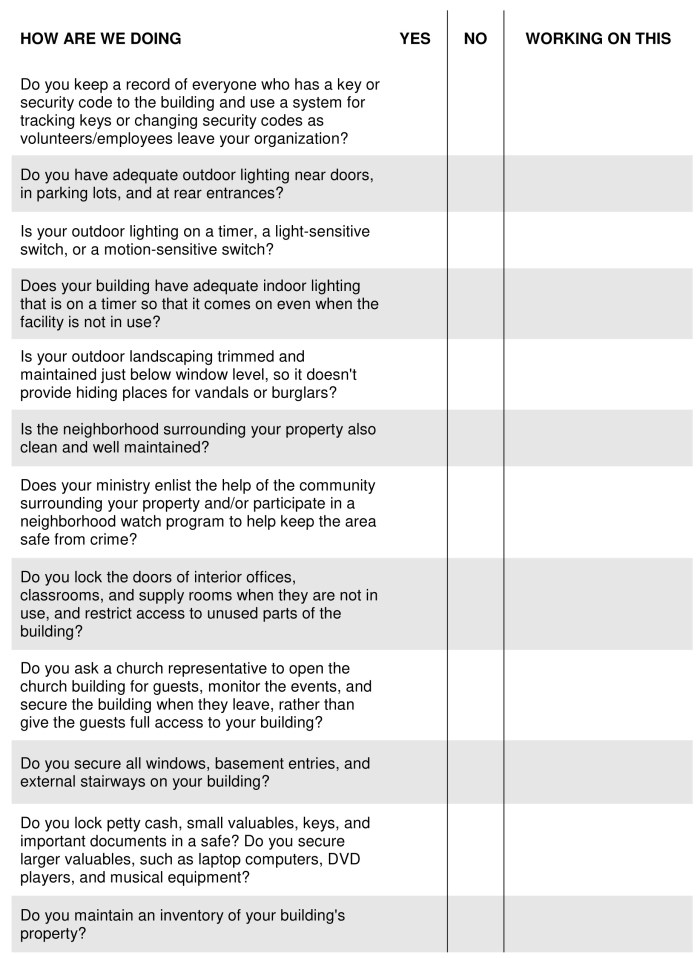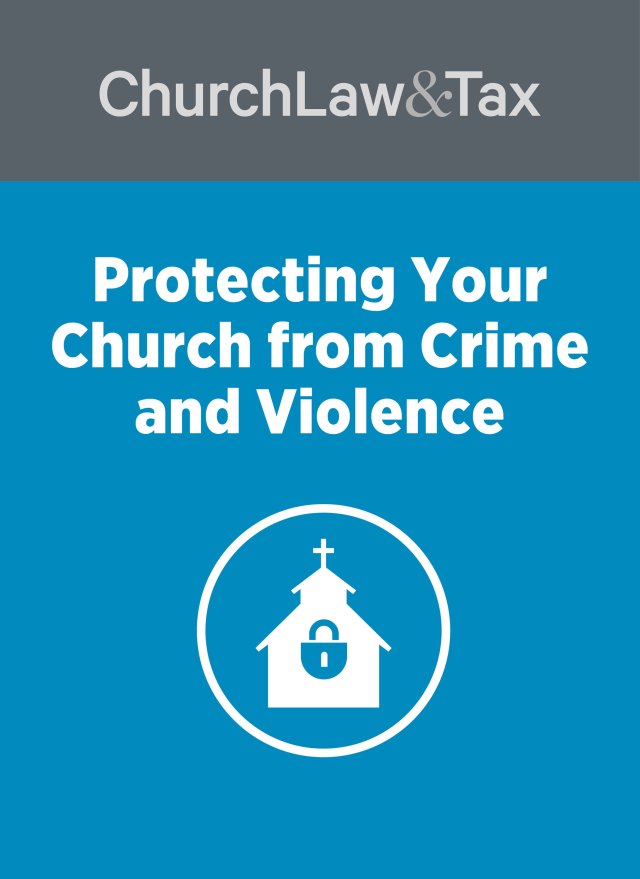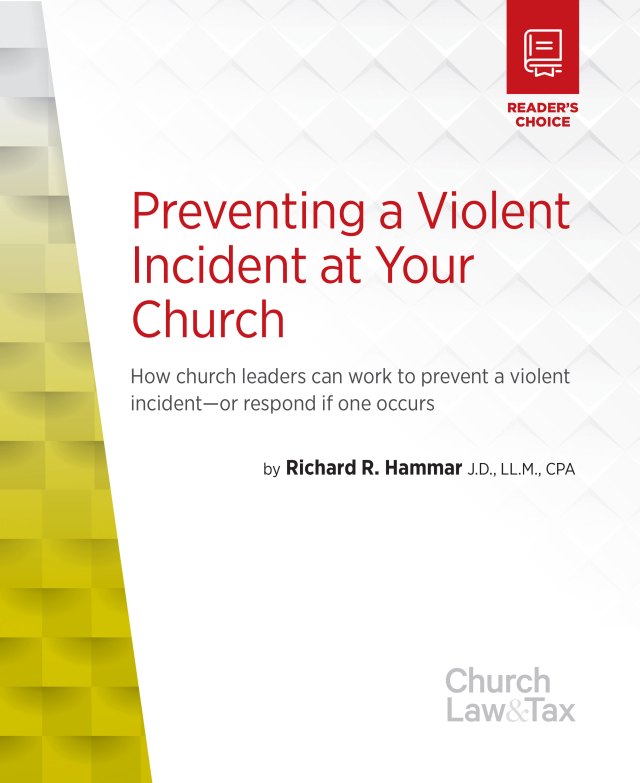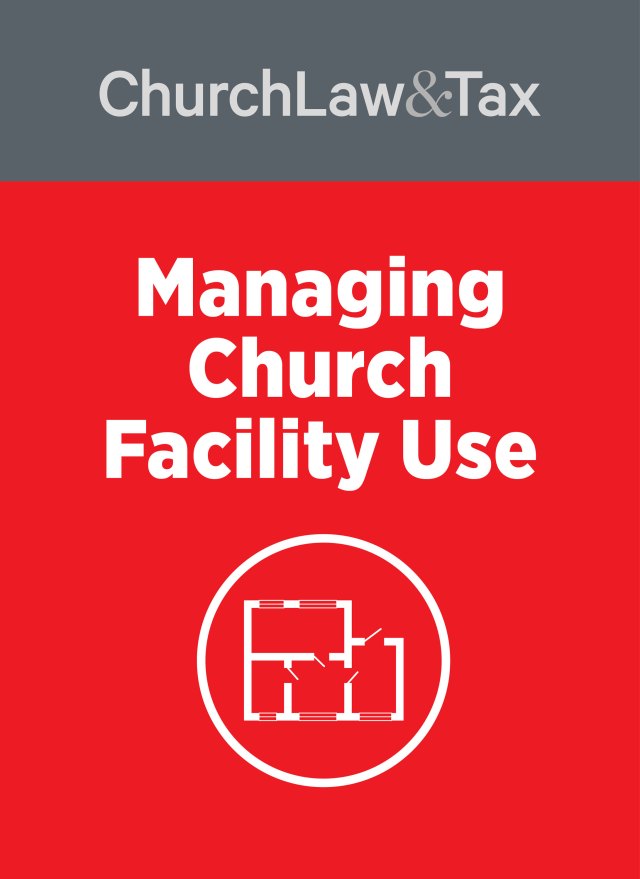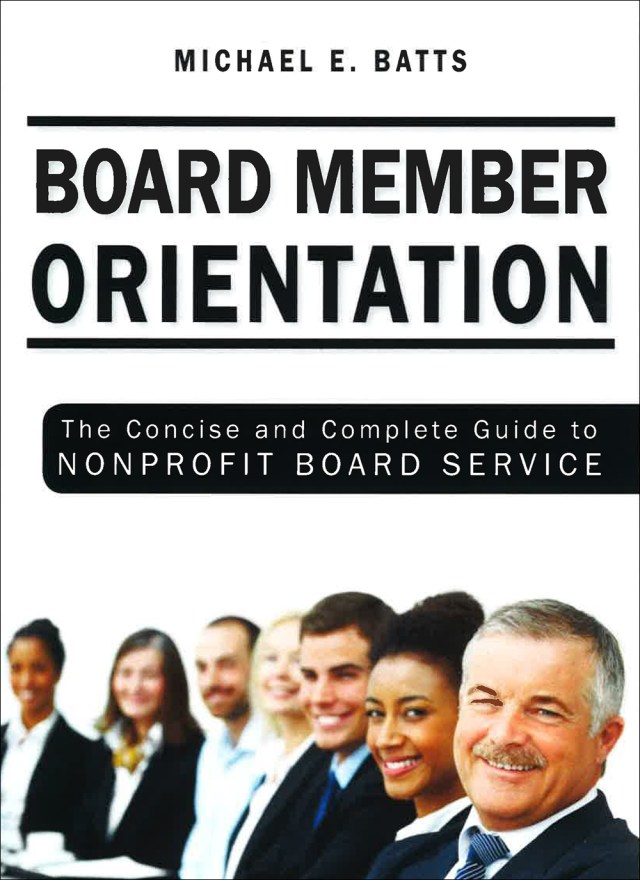Use the following checklist to gauge how your church is doing at preventing crime.
Download a PDF version of this checklist.
What Makes a Church Vulnerable?
The days of unlocking a church in the morning and leaving it open all day have gone the way of the one-room, wooden chapel. Churches today house thousands of dollars’ worth of sound equipment, musical instruments, and computers, not to mention sizable contributions. If criminals sense easy access to potential cash, it’s only a matter of time before your church becomes a target. By understanding your vulnerabilities, you can strengthen your resistance to property crimes.
Step 1: Do a Risk Assessment
The first step in knowing how to prevent burglaries, theft, and vandalism is to assess your risks. If you’re unsure how to do this, ask a security consultant or a local law enforcement agency to help you. The assessment section of this download can help you get started, but you’re also encouraged to examine the type and frequency of crimes in your area and determine if any of your policies and procedures are leaving you susceptible, such as leaving a door open all of the time or having one person be responsible for all financial records within the church office.
Step 2: Create a Security Plan
Once you know your vulnerabilities, you can create a plan for solving them. Your security plan should include:
- An objective: What are you trying to achieve? In what time frame?
- An analysis: How can the problems be solved? What problems take first priority?
- A training component: Is staff trained in security awareness? What role should staff members and volunteers play in an emergency situation?
- Implementation: What steps will we take to improve security in the next one to five years?
Step 3: Take Action
Knowing what makes your church vulnerable and what you can do about it gives you a road map to follow. Even if your church has improved security in the past, it makes sense to review your systems and procedures regularly, to make sure you haven’t missed anything or that new susceptibilities haven’t crept in.

